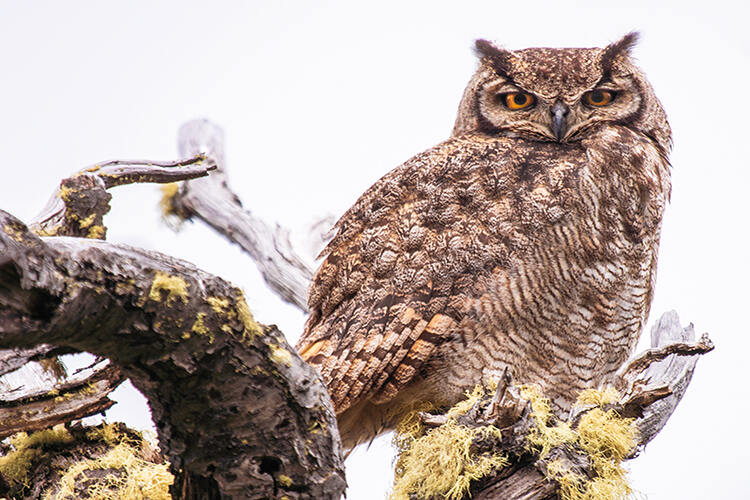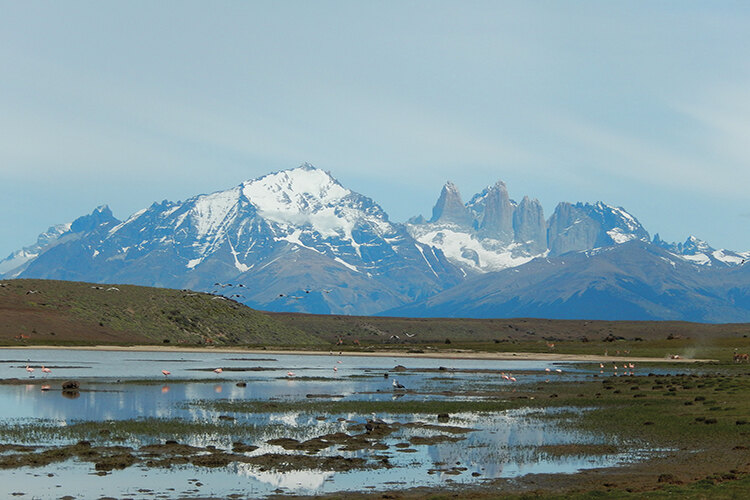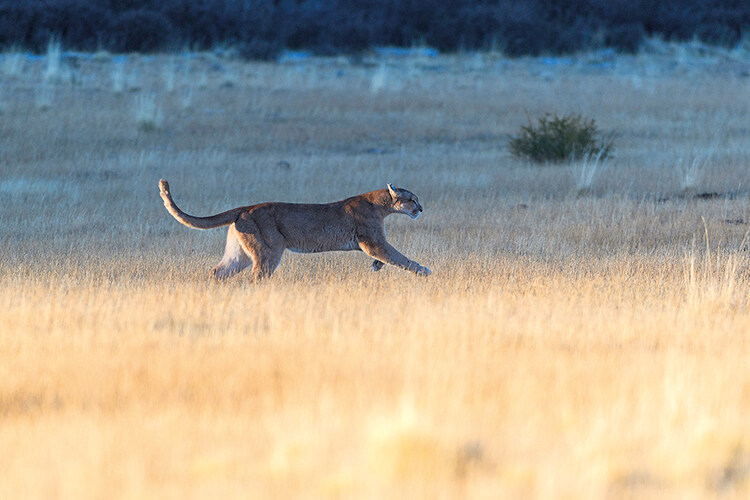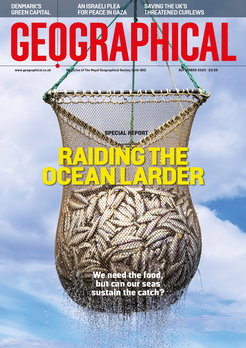
In the wilds of the Patagonia steppe, sheep farmers are learning to live with pumas as part of a pioneering conservation project by Estancia Cerro Guido
Report by Shafik Meghji
A burnt-orange light illuminated the Patagonian steppe as our jeep bounced along a stony track, scattering a flock of grazing sheep into a patch of white-flowering mata negra bushes. The dawn horizon was dominated by the Condoreras, a jagged golden ridge that stretches across Estancia Cerro Guido, one of the largest ranches in southern Chile. The trekking hotspot of Parque Nacional Torres del Paine, which attracts hundreds of thousands of tourists each year, was just a few kilometres away, yet it felt as if we had the whole area all to ourselves.
At the base of the Condoreras we joined puma tracker Ricardo Muza, who was patiently scanning the striated rock face with binoculars for a telltale flash of movement. ‘Pumas are perfectly evolved for this landscape,’ he said, nursing a flask of coffee to stave off the early-morning chill. ‘They blend right into the landscape. You can be right next to them and not see them – but they can see you.’
Muza is one of three puma trackers employed by Estancia Cerro Guido – whose 100,000 hectares are home to 16,000 sheep – as part of a pioneering conservation project that aims to transform attitudes in a region where the big cats have long been viewed as a menace.
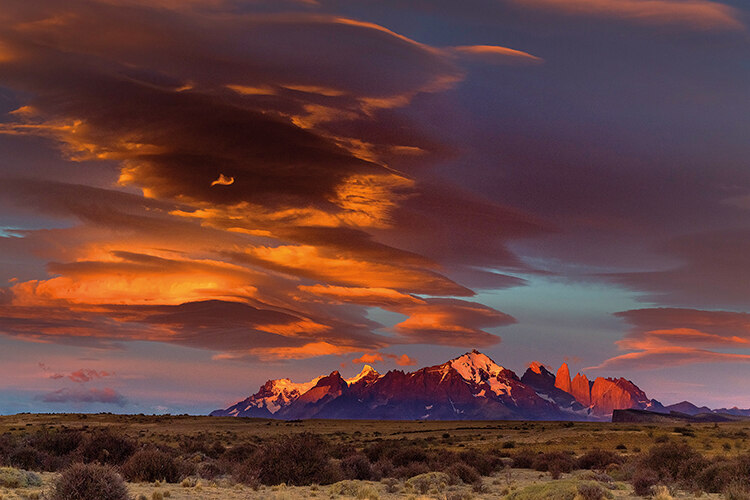
Golden age of wool
During the late 19th and early 20th centuries, a sheep-ranching boom transformed Patagonia, as the Chilean and Argentine governments asserted their control over, respectively, the west and east of a region that had been inhabited by Indigenous peoples for millennia. In 1877, just 34 years after Chile established its first colony on the northwest shore of the Strait of Magellan, the governor of the fledgling port city of Punta Arenas brought over a 300-strong flock from the Falkland Islands and sold it to Henry Reynard, who had migrated from Yorkshire. Reynard’s wool-producing business swiftly proved to be a success, inspiring countless imitators.
Within a decade, there were two million sheep in Patagonia, ushering in a ‘golden age’ of wool that created vast fortunes for the ranching elite. The subsequent advent of industrial refrigeration technology allowed their meat to be exported around the world, super-charging the regional economy. By 1910, there were 12 million sheep in Patagonia, which was by then blanketed by estancias – ranches that, because of the relatively poor quality of the grazing land, extended over vast areas – and state-of-the-art meatpacking plants, while thousands of immigrant workers arrived from Europe, central and northern Chile and Argentina, and beyond.
This had a seismic impact. During this period, Indigenous peoples across Patagonia and Tierra del Fuego were massacred in military campaigns, forcibly displaced from their ancestral lands, ravaged by diseases brought in by settlers and hunted by ranchers. Many of those who survived ended up working on estancias.

The ever-expanding ranchers also came into conflict with the native wildlife. Guanacos – wild relatives of the llama and the traditional prey of Patagonia’s apex predator, the puma – were hunted or driven off to prevent them from competing with the livestock for grazing land. As a result, the big cats began to prey on sheep and cows, which were easier to hunt than the more robust camelids. In response, ranches employed hunters known as leoneros to kill the pumas.
A century on, the golden age of sheep ranching is long gone – thanks, largely, to the opening of the Panama Canal, which reduced trade along the Strait of Magellan, and the development of synthetic fibres – but it remains central to the economy and culture of southern Chile. The day-to-day work of gauchos and baqueanos (cowboys) has changed relatively little over the past 100 years and puma hunting remains common, even though it has been illegal in Chile since the 1980s. According to estimates, leoneros kill as many as 100 pumas a year, for which they are paid US$200–400 per animal.
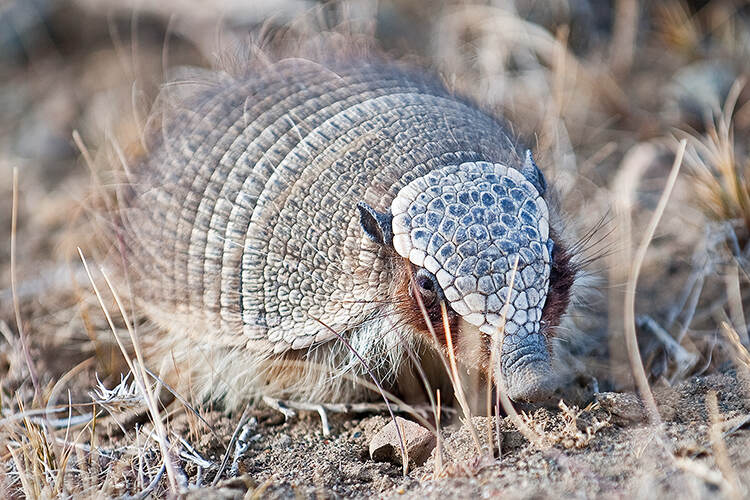
Hunters turned gamekeepers
After surveying the Condoreras from below, we followed Muza as he circled around to the opposite flank of the ridge, where a shallow slope allowed us to ascend towards the summit. Although the pumas – dubbed ‘ghost cats’ because of their elusiveness – remained out of sight, the steppe was filled with life. An ostrich-like rhea led a train of six youngsters along the track before disappearing into the undergrowth, while a fluffy caracara chick popped its head out of a nest as we approached before ducking down again in fright. Further on, a black-and-white hog-nosed skunk – cuter than its name suggests – appeared alongside a herd of skittish guanacos.
On a scrubby plateau, we met Pía Vergara, executive director of the Cerro Guido Conservation Foundation and a photographer who has worked with pumas for more than 20 years. She explained that pumas were hunted on Estancia Cerro Guido, too, until the owners decided to dramatically shift course in 2019. ‘They are very visionary – they know the world is changing and I was like a mosquito in their ears, buzzing away for them to do something,’ she said as we hiked to the top of the Condoreras. ‘I presented the project and they said, “Okay, let’s go. We will try it for one year and see what happens.” The goal of the foundation is to protect the region’s natural and cultural heritage, promoting harmonious coexistence.’
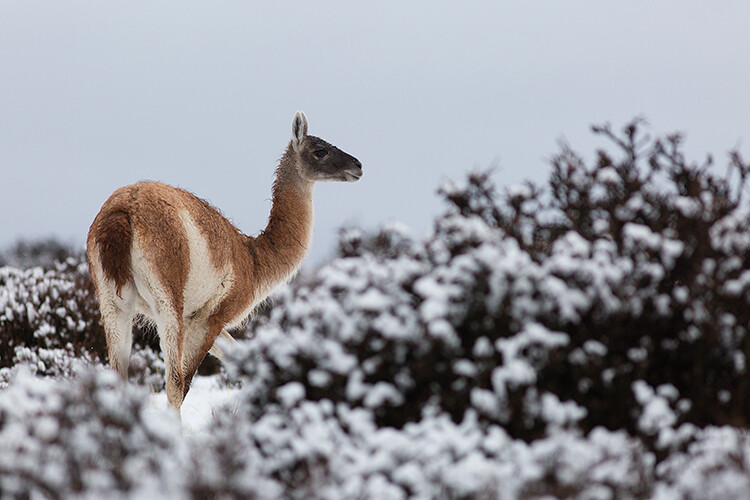
Since then, the foundation has replaced puma hunting with humane deterrents: camera traps to monitor the cats; foxlights, devices with blinking, multicoloured LEDs placed in fields to provide the illusion of a human presence; and around 20 ‘livestock protection dogs’ – large, shaggy maremma and Pyrenean mountain dogs, commonly used in the Alps to deter wolves – that live with the sheep from an early age and develop a strong protective instinct for the flocks. These complement trackers such as Muza and colleague Mirko Utrovicic, a former leonero who featured in the recent CNN series Patagonia: Life on the Edge of the World. ‘He used to kill pumas, now he protects them,’ said Muza.
Dissuaded from preying on livestock, the 32 pumas that have been spotted in Cerro Guido tend to focus instead on guanacos, whose numbers have partially recovered in Chile after being driven to the brink of extinction during the 20th century. Thanks to a hunting ban, habitat protection and conservation efforts, particularly in national parks such as Torres del Paine, there are now an estimated 247,000–308,000 nationwide and the species is no longer considered to be at risk in Patagonia. The guanaco steaks that appear on Chilean restaurant menus are from Tierra del Fuego, where hunting is permitted as the animals have no natural predators in the archipelago. Since 2021, puma sightings on Cerro Guido have risen significantly, yet hunting the cats remains deeply ingrained in the local culture, so there was understandably some hostility to the project from the estancia’s own workers, as Vergara acknowledged. ‘It’s never easy,’ she said. ‘At the beginning they were very resistant, but with time they became a bit more, “Oh, okay, maybe.” Sometimes they still want to kill pumas, but the youngest are more in favour of what we’re doing. It’s a long way to go because you are changing a paradigm. It’s not just the pumas – it’s attitudes to the fauna in general.’
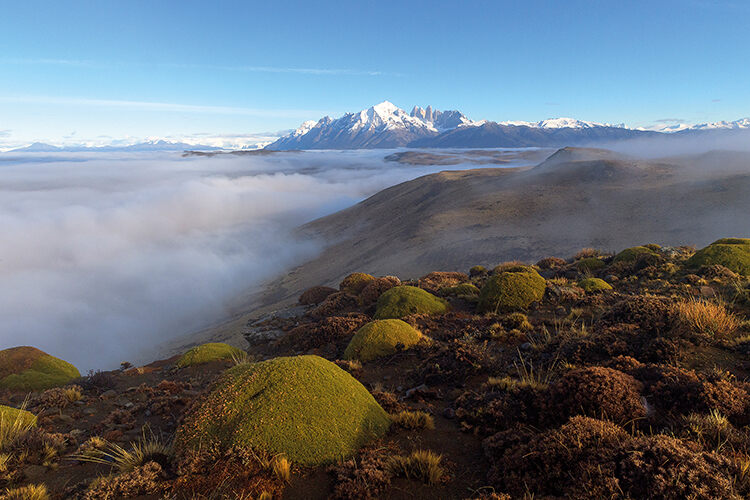
A project to inspire
The summit of the Condoreras provided glorious views of Torres del Paine’s eponymous granite towers and the cobalt waters of the glacial Lake Sarmiento. Spiky coirón fueguino grass and bulbous green llareta – slow-growing plants that can live for thousands of years – covered the ground and wild thyme scented the air. As a snow eagle circled overhead, we checked a pair of camera traps, one of which had footage of a male puma from the previous night. Nearby, Pia pointed out fresh scat, a set of deep scratch marks and a flattened bush that had provided a bed for the night. A few metres away was a ‘puma staircase’, a popular route up and down the cliff-face for the sure-footed cats.
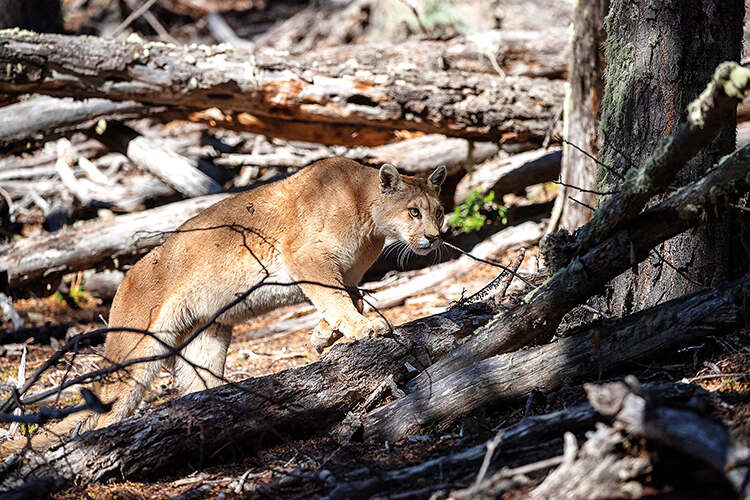
As we hiked back to the Jeeps, Vergara explained that the project aims to inspire other ranches to adopt a similar approach. Not all have been receptive. ‘A neighbouring estancia is still killing pumas,’ she said. ‘I have meetings with them, offering them help and they’re like, “No, we don’t want to, we will kill pumas and protect the sheep the way that we know.” You need time. We want to demonstrate with facts, rather than words. To show them that you can do things in another way that’s better for you, better for the environment, better for the fauna.’
Local attitudes may be deep set, but it’s hard to argue with the effectiveness of Cerro Guido’s work. Estancias in this part of Patagonia claim to lose around six per cent of their flocks annually to pumas. In collaboration with wild cat conservation NGO Panthera, Cerro Guido staged an experiment in 2021, fencing off a field with 1,000 sheep, four guard dogs and no gauchos. The result was a less than one per cent loss of sheep due to pumas. The estancia has recently launched another project with Panthera, attaching GPS collars to a group of pumas, sheep and protection dogs in a designated area to study their behaviour. ‘This will give us a very good picture of what is happening between the species, how they are interacting and the feeding habits of the pumas. We can then share this with other estancias, so they know how to manage their situations better,’ said Vergara.

Pumas are a vital ‘umbrella species’ in Patagonia – protecting them also protects the rest of the ecosystem. ‘When a puma kills a guanaco, everybody eats – you see the carcass being fed on by condors, caracaras, foxes, armadillos and other scavengers,’ said Muza. Cerro Guido’s work has also aided the study of other wild felines: Geoffroy’s cats, which resemble minature leopards, and smaller and even rarer pampas (or colocolo) cats have both been found on the estancia. The camera trap footage of the latter was the first time the species had been spotted in the region for 30 years.
Back in the Jeep, we drove north towards the 120-year-old homestead and the rippling Sierra Baguales beyond, stopping periodically to check camera traps, a recently abandoned guanaco carcass and a maremma pup in training. In the process, I experienced more of the area’s biodiversity. Black-headed ibis screeched past, while three fox cubs play-fought in a wooden corral alongside some nonplussed cows. Candy-pink flamingos tiptoed through a mirror-like lake; a family of guanacos nibbled at the gently swaying grass; and the car-alarm calls of southern lapwings echoed across the fields.

Financial benefits
Tourism has a vital role to play in Cerro Guido’s conservation work, which appeared in David Attenborough’s BBC series Dynasties II and also seeks to preserve the region’s cultural heritage, through activities such as the restoration of historic buildings and palaeontological studies. ‘Conservation safaris’ such as the one I undertook, which was organised through a partnership with the nearby Tierra Patagonia hotel, allow travellers to shadow the puma trackers, explore a little-visited swathe of Patagonian steppe and learn about the region’s wildlife, history and traditions. As well as generating funds for the foundation, the safaris show neighbouring ranches that there are financial benefits to protecting pumas beyond simply reducing losses to their flocks.
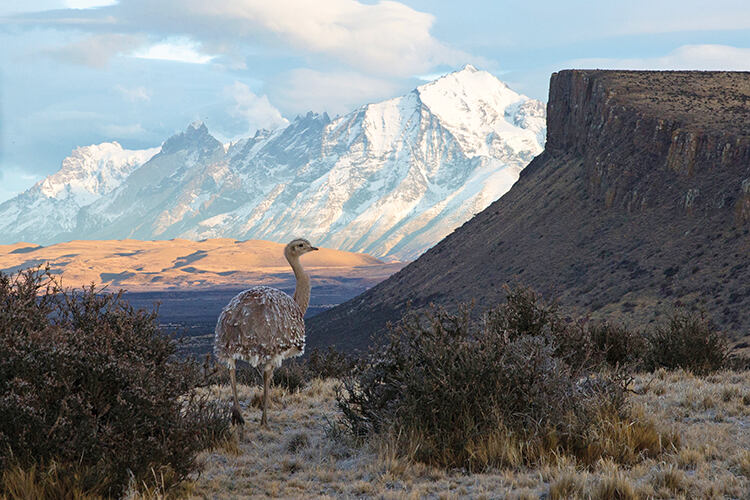
The project has the added benefit of drawing travellers away from Torres del Paine, whose infrastructure and ecosystems are creaking from overtourism now that visitor numbers are returning to pre-pandemic levels. The park’s puma population has grown to an estimated 50–200 in recent years, thanks to improved protection measures, increased guanaco numbers and an extended tourist-free period due to Covid-19 restrictions. At the same time, puma-spotting tours have become increasingly popular. Unfortunately, many are irresponsible, with guides taking large groups too close to, and spending too long with, the cats, stressing and potentially even provoking them.
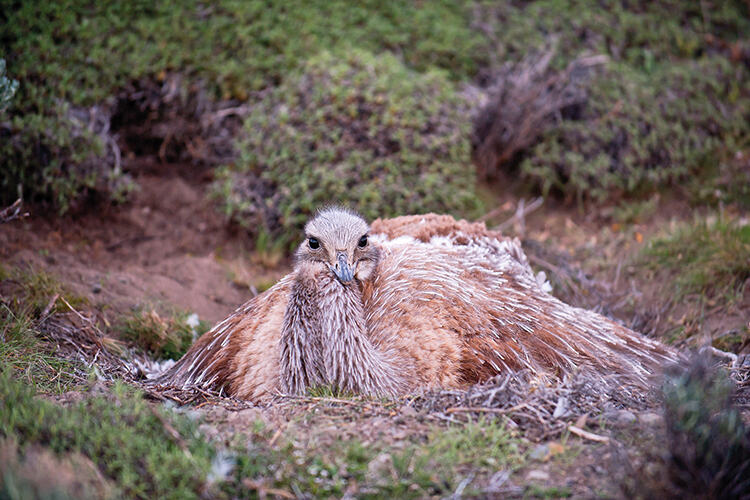
As we sat down for a hearty meal of cordero al palo – Patagonian-style barbecued lamb – at the end of the day, Vergara explained that Cerro Guido’s safaris focus on showcasing the conservation project, with puma sightings a bonus, rather than the sole focus. ‘We want to build a model that is replicated in other estancias, other regions and other parts of the world,’ she added.
I may not have seen a Patagonian ‘ghost cat’ on my trip, but it was reassuring to know that, thanks to the work of Cerro Guido, one almost certainly spotted me.
Shafik visited the project as the guest of Tierra Patagonia and Estancia Cerro Guido.
